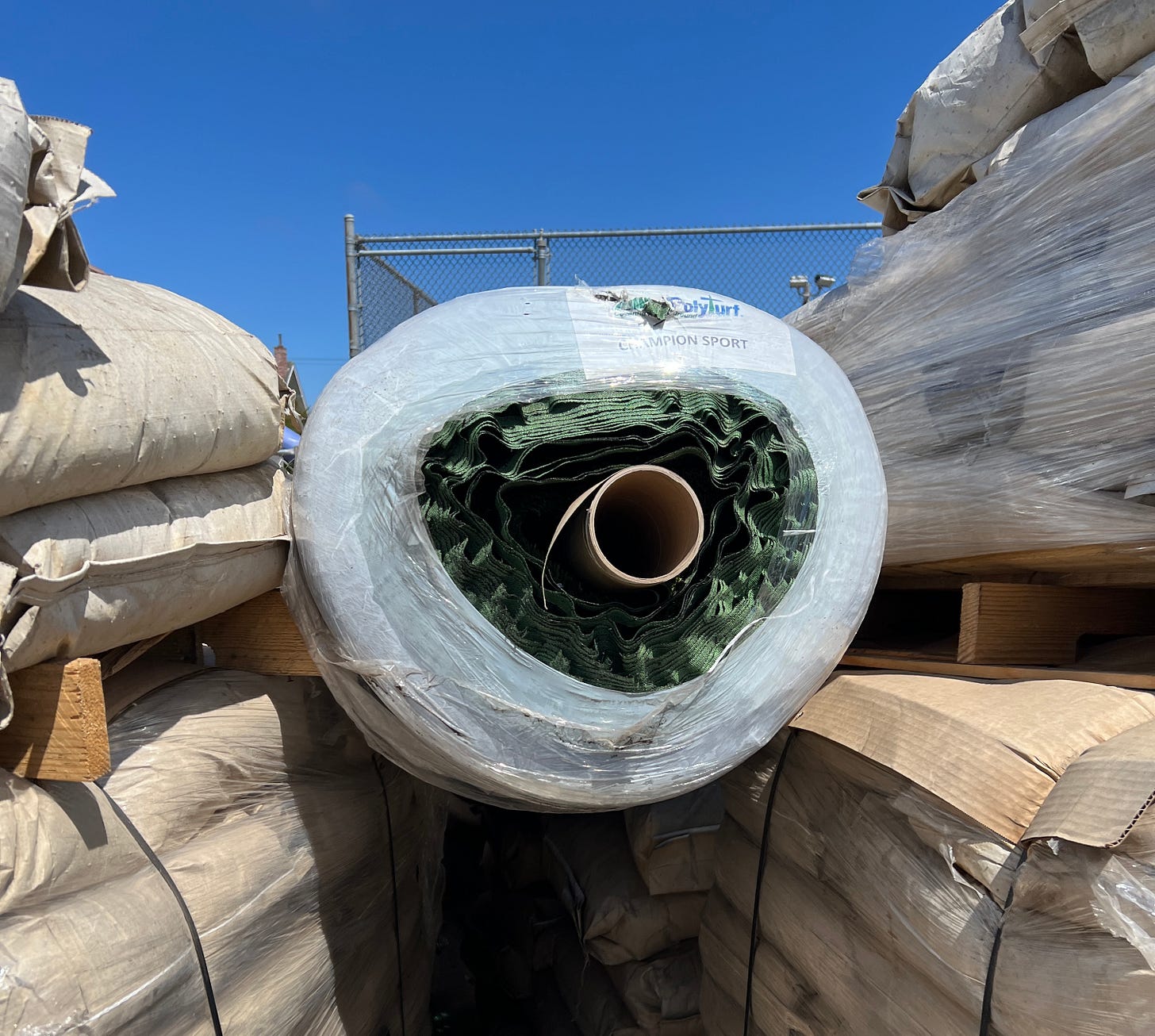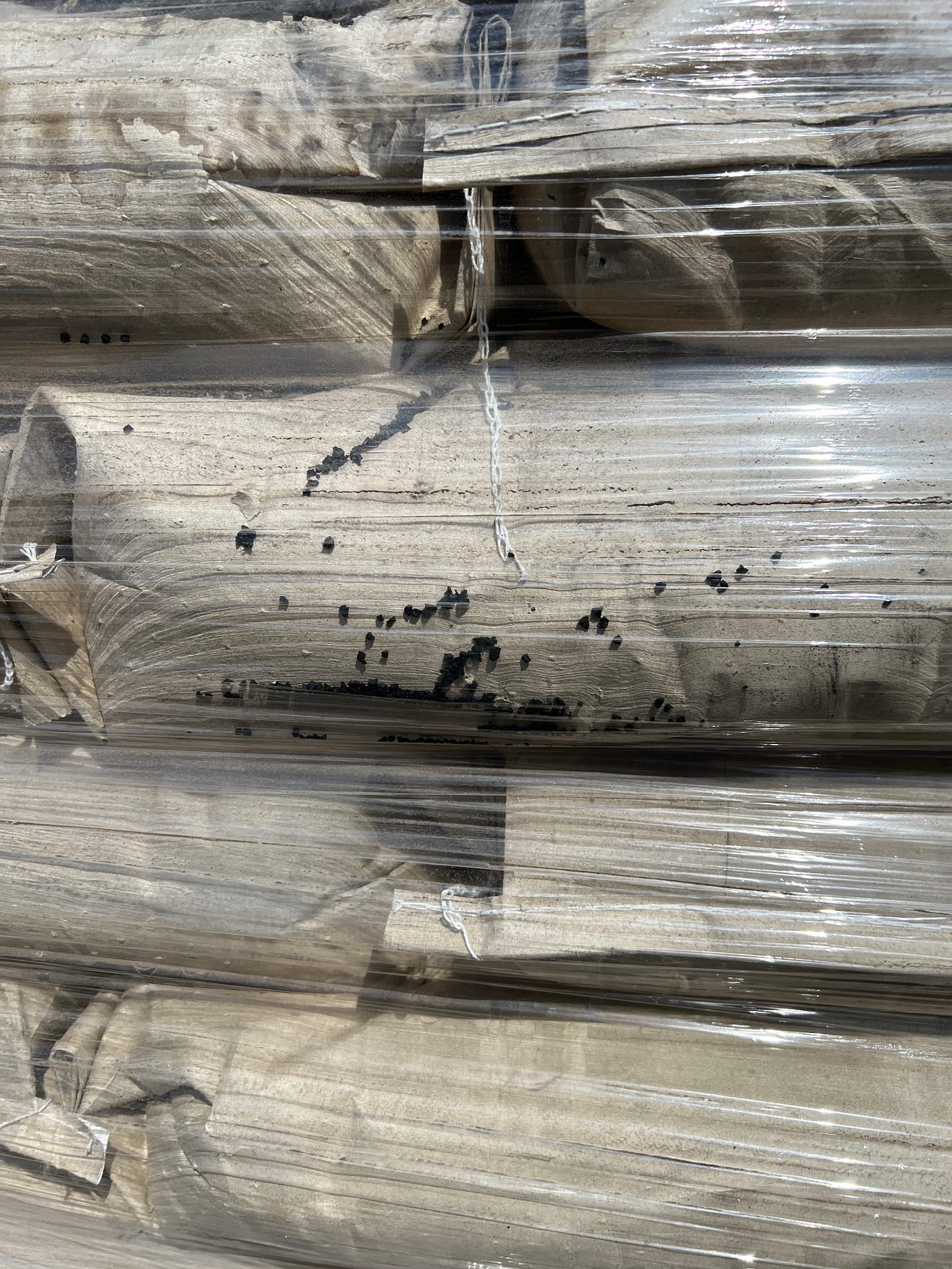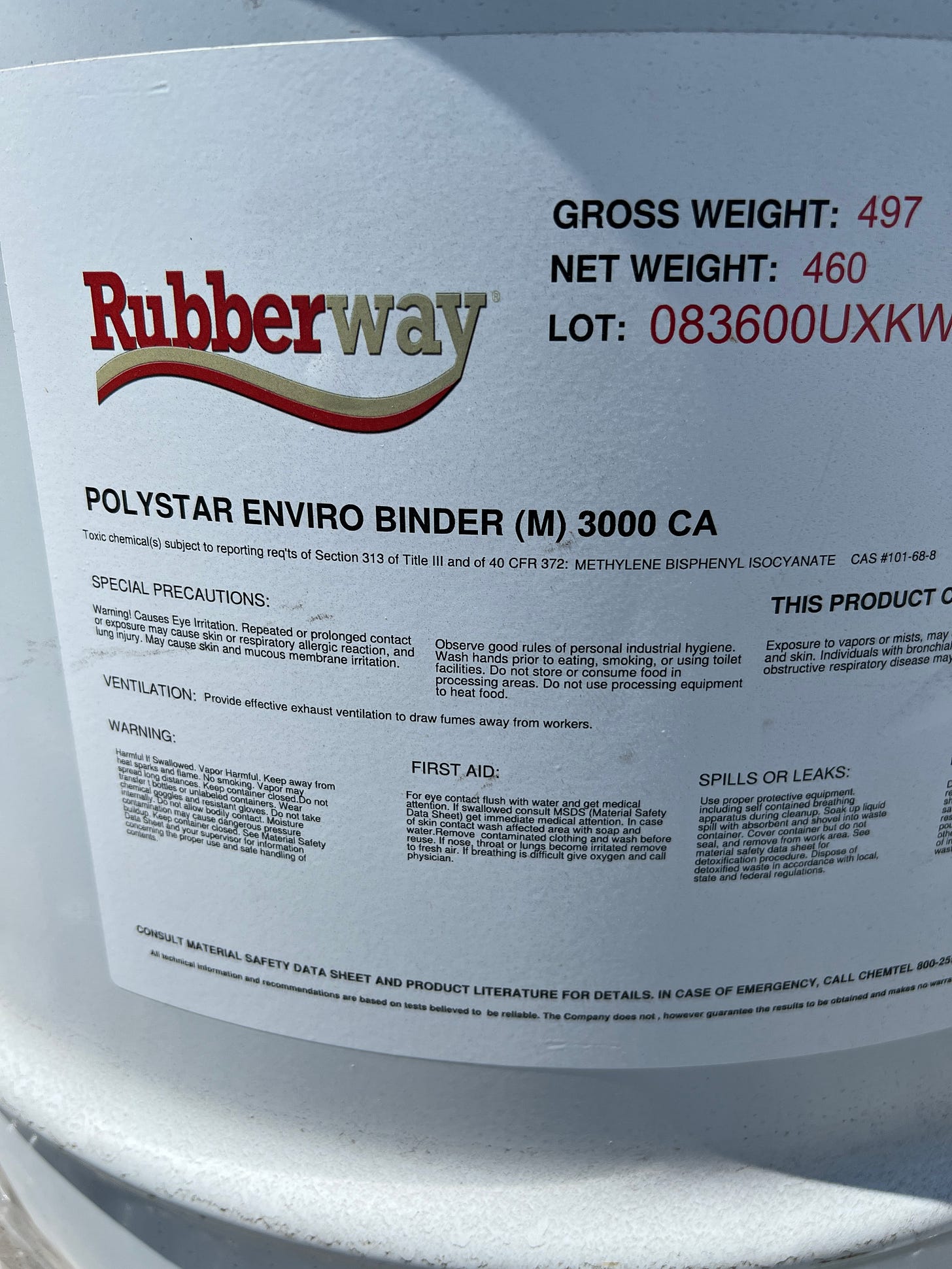Turf War in Fort Bragg, CA: Residents Question Safety of Artificial Fields
A long-awaited improvement project to revitalize a community park in the coastal town of Fort Bragg has become a new flashpoint in the national debate over artificial turf and its potential environmental hazards.
Bainbridge Park is a grassy expanse four blocks from city hall long favored by dog owners and vagrants. It is slated for a transformation into a family-friendly destination, complete with a multiuse pavilion and two small playing fields. But concerns over toxic chemicals in synthetic surfaces have cast a shadow over the project, drawing vocal opposition from residents and scrutiny from state and federal agencies.
The project has been in development for a decade, according to Chantell O’Neal, assistant director of public works for Fort Bragg. “Community discussions date back to 2015, when we started the draft of the Bainbridge Park master plan,” she said. “In 2023, the project gained new momentum when the city was awarded a $2 million Prop. 68 State Parks grant. The project’s purpose is to provide much-needed recreational amenities for youth and families, improve accessibility, and create a safe, inclusive community space.”
Instead, the initiative has ignited alarm over artificial turf and other synthetic materials used in playground surfaces — materials that some residents argue are unsafe and environmentally damaging.
“This is our land, our children, our water, and we are paying for it to be polluted,” said Chris Cisper, a ceramic artist who lives a block from the park, at a City Council meeting earlier this month.
Cisper and others point to mounting concerns over so-called “forever chemicals” — per- and polyfluoroalkyl substances, or PFAS — which are commonly found in artificial turf and are resistant to environmental degradation as well as the crumb rubber, pictured below in a photo taken at Bainbridge Park.
A change.org petition requesting the city halt the project had gathered 241 signatures as of Saturday morning, August 2, 2025.
Tamara Baxman, a longtime resident, noted that the California Legislature voted overwhelmingly in 2024 to prohibit cities, counties, and schools from purchasing or installing synthetic turf that contain PFAS. “It’s a no-brainer to just put in natural grass,” she said. “Let people go to the park like they always did.”
Although Gov. Gavin Newsom vetoed the PFAS ban approved by the state legislature last year, he signed a companion bill allowing municipalities to impose their own restrictions.
Other residents expressed concern about health warnings on the specific materials slated for use in Bainbridge Park. Louise Mariana, who plays tennis in the park, said she was troubled by labeling that warned of respiratory and skin risks
.
“If you read the warning labels, you’ll see there is off-gassing that can cause asthmatic reactions,” she said. “Children fall. Their faces will be in that turf. They’ll be breathing this stuff. It’s all over their hands. This isn’t environmental. It’s detrimental to our children, and you’ve destroyed a beautiful park.”
City officials insist the material is safe. O’Neal, who also serves as project manager, said the surface selected is a bonded, poured-in-place rubber rather than loose crumb rubber. “We prioritized safety, durability, and environmental responsibility,” she said at the city council meeting on July 21, 2025.
But Cisper and others remain unconvinced. He argues that the city should have conducted a full Environmental Impact Report under the California Environmental Quality Act, or CEQA. He also noted the presence of bags of loose crumb rubber stacked up at the site. The presence of these bags was confirmed by this reporter.
According to Environmental Health Review, a journal published by the Canadian Institute of Public Health Inspectors, individual components of poured-in-place surfaces can pose inhalation risks before they cure. A 2018 article in the journal noted that further research is needed to assess whether those risks increase as the material ages and degrades.
In Korea, cancer risk was found to be approximately ten times higher in poured rubber surfaced playgrounds than in dirt playgrounds.
While Fort Bragg has not been sued over the turf plan, other municipalities have faced legal challenges. Cities such as Boston; Millbrae in San Mateo County; and San Marino in Los Angeles County have banned synthetic turf installations. In Rye, N.Y., residents sued their local government over health concerns related to artificial turf. A judge subsequently dismissed the case which claimed that the city of Rye had improperly declared itself the lead agency and ignored data from opponents of the project.
Cisper said he has filed complaints with the California Attorney General’s Office, the U.S. Environmental Protection Agency’s Office of Inspector General, the Mendocino County District Attorney, and the FBI Environmental Crimes Unit. He alleges that the city fraudulently claimed CEQA exemptions and misrepresented the park’s condition — stating in grant applications that the turf would replace “existing” soccer fields, when in fact it would replace a multiuse grassy area frequented by both dogs and families.
Fort Bragg Mayor Jason Godeke said the City Council made the appropriate exemption determination for CEQA after a staff presentation and public input. “The CEQA evaluation was conducted for the project as a whole, not for each individual amenity in isolation,” Godeke said in an email. “Multiple CEQA exemptions were determined to apply. All aspects of the project were properly reviewed and documented.”
Godeke said he has done his own research and concluded: “The park is going to be safe for those of us who use it, and that the renovated park will offer many new public benefits, including a playground that is more accessible, and soccer courts that will serve the hundreds of kids and adults who need a good place to play the sport in our town.”
In future stories Mendo Local will look at:
A draft study conducted by the state of California into the risks of crumb rubber referenced by Mayor Jason Godeke in his defense of the Bainbridge Park Project
The stance taken by the California Coastal Commission on poured-in-place rubber playground surfaces
The point of view of advocates for youth soccer
The legislative debate over synthetic turf and PFAs
How other California cities are responding to the risks of artificial turf
The response of the artificial turf industry






Instead of focusing only on the potential harm, which seems small to me, why not do a proper cost benefit analysis? That will bring the issue into a better perspective.